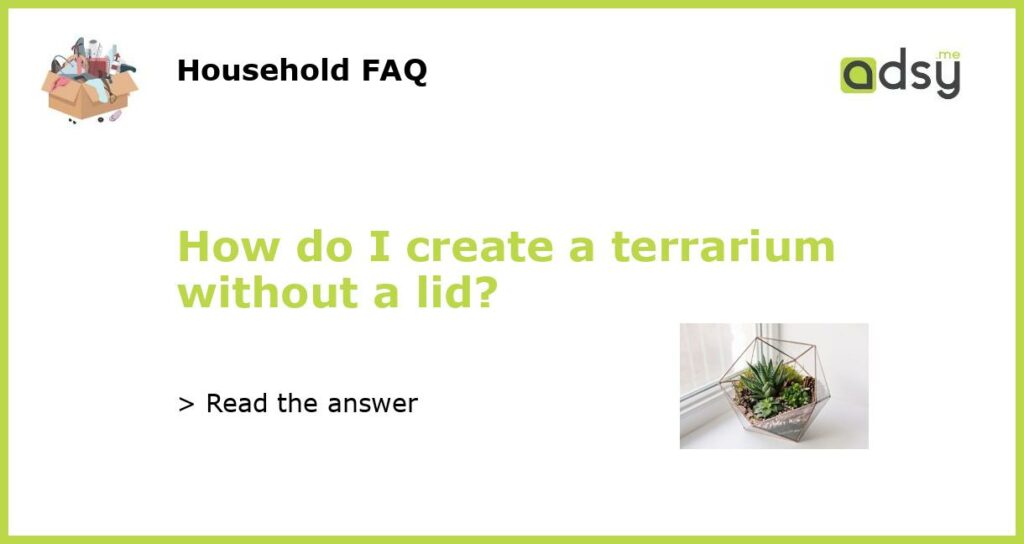Why Create a Terrarium Without a Lid?
Creating a terrarium without a lid can have several benefits. While traditional terrariums are typically sealed for moisture retention, open terrariums allow for better airflow, reducing the risk of mold and fungus growth. Additionally, an open terrarium can create a more natural environment for certain types of plants that prefer drier conditions. So, if you’re interested in creating a low-maintenance and aesthetically pleasing terrarium, going lidless might be the way to go.
Choosing the Right Plants
The first step in creating a lidless terrarium is selecting the right plants. Since an open terrarium doesn’t create a high humidity environment, it’s important to choose plants that can thrive in drier conditions. Some popular choices for lidless terrariums include succulents, cacti, air plants, and certain types of ferns. These plants have adaptations that allow them to withstand lower humidity levels and require less frequent watering.
Selecting the Ideal Container
When creating a terrarium without a lid, it’s crucial to choose the right container. Opt for a container with an open top to allow for ample airflow. Good options include glass jars, bowls, or even repurposed fish tanks. The container should also have proper drainage to prevent water from pooling at the bottom and causing root rot. If the container doesn’t have drainage holes, you can create a layer of pebbles or activated charcoal at the bottom to help with water drainage.
Creating the Terrarium
Now that you have your plants and container ready, it’s time to create your lidless terrarium. Start by adding a layer of gravel or pebbles at the bottom of the container to enhance drainage. Next, add a layer of activated charcoal to help keep the terrarium free from odors and bacteria. This layer also aids in water filtration. Then, add a layer of well-draining potting soil or a soil mix specifically formulated for succulents and cacti.
After preparing the layers, it’s time to carefully plant your chosen plants. Dig holes in the soil and gently place the plants, backfilling with additional soil if needed. Be mindful not to overcrowd the terrarium as the plants need some space to grow. Once the plants are in place, water them lightly, allowing any excess water to drain out.
Caring for Your Lidless Terrarium
After creating your lidless terrarium, proper care is essential to ensure its long-term success. Here are some key care tips:
- Light: Place your terrarium in a location that receives adequate light for the specific plants you’ve chosen. Most lidless terrarium plants thrive in bright, indirect light.
- Watering: While lidless terrariums require less frequent watering compared to sealed ones, it’s still important to monitor the moisture levels. Water the terrarium whenever the soil feels dry to the touch, but be cautious not to overwater.
- Pruning: Regularly prune your plants to maintain their shape and prevent overcrowding. Remove any dead or yellowing leaves to maintain a clean and healthy terrarium environment.
With these care tips in mind, your lidless terrarium can flourish and become a beautiful addition to your home or office space.






